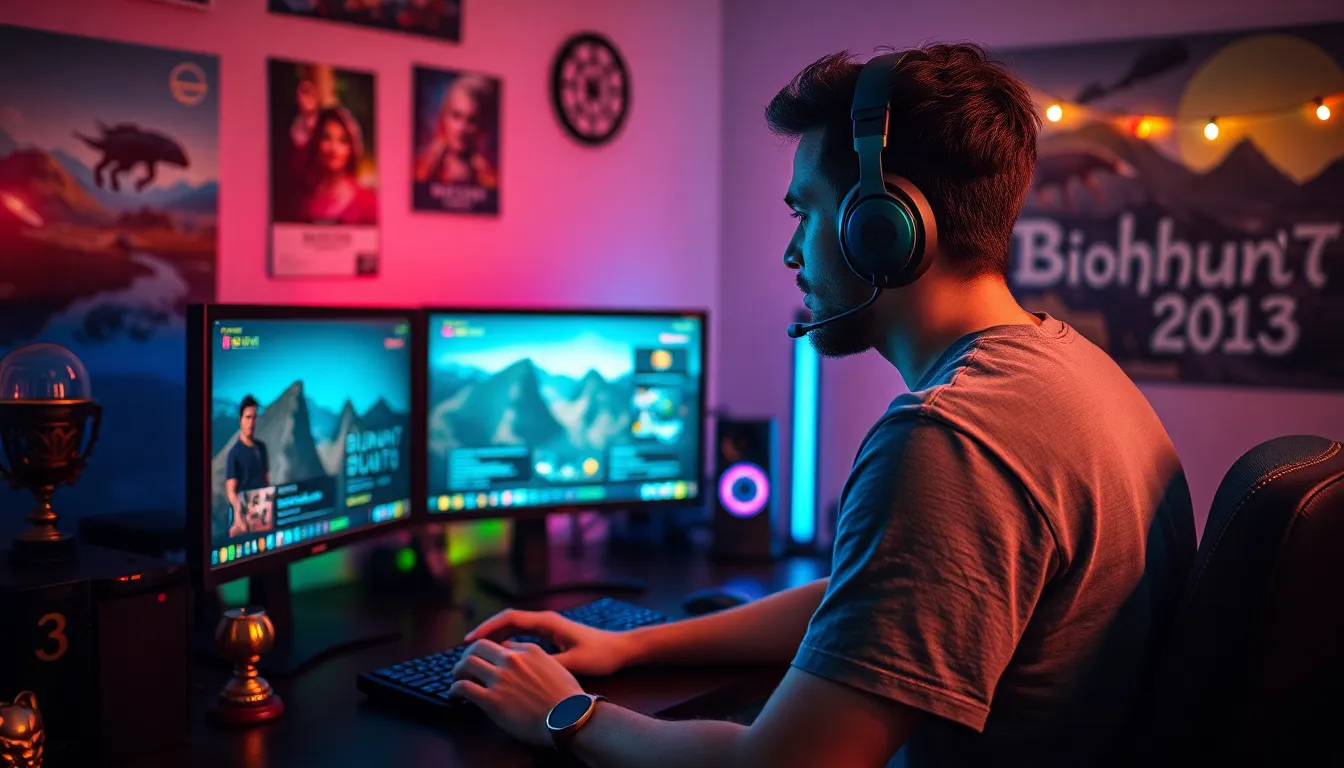Table of Contents
ToggleIn a world where scrolling through social media feels like a competitive sport, it’s easy to lose track of how much time is spent glued to that shiny iPhone screen. Ever wondered just how many hours you’ve dedicated to binge-watching cat videos or perfecting your selfie game? Fear not! The elusive Screen Time feature is here to save the day—and your sanity.
Understanding Screen Time Feature
The Screen Time feature on the iPhone offers valuable insights into device usage. Users can track their habits and manage their time effectively.
Benefits of Monitoring Screen Time
Monitoring screen time provides clarity on usage patterns. Users gain awareness of how much time they spend on social media and other apps. This awareness can lead to healthier device habits. Studies show that limited screen time may reduce anxiety and improve sleep quality. By setting app limits, users can focus on important tasks while minimizing distractions. Overall, Screen Time encourages intentional use of devices, fostering a balanced lifestyle.
How Screen Time Works
The Screen Time feature operates by tracking app usage and activity periods. Users access it through the Settings menu on their iPhone. Reports present daily and weekly summaries of time spent on individual apps. Notifications alert users when they approach set limits. Additional features include monitoring usage by family members, which can be beneficial for parents. Users can also customize downtime to restrict access during designated hours, enhancing focus. The combination of these tools empowers users to take control of their screen time.
Locating Screen Time on iPhone

Finding Screen Time on an iPhone is a straightforward process. Users can access this feature in a couple of different ways.
Accessing Through Settings
Navigate to the Settings app on the home screen to begin. From there, scroll down until you see the Screen Time option. Tap on it to open the feature. Users can then view their daily and weekly usage statistics along with app limits. This section also provides options for setting downtime and selecting restrictions for individual apps. Adjusting settings can help manage screen time effectively and promote healthier usage habits.
Using Siri for Quick Access
Activate Siri by saying “Hey Siri” or pressing the side button on the iPhone. Users can ask Siri to “Show my Screen Time.” Siri will promptly display the Screen Time summary, allowing users to access their statistics without navigating through the Settings app. This convenient method streamlines the tracking process. Users can quickly gain insights into their usage patterns and stay informed about their device habits. By utilizing Siri, monitoring screen time becomes effortless and efficient.
Customizing Screen Time Settings
Customizing Screen Time settings enhances user experience by providing control over app usage and focus time. This feature empowers individuals to tailor their device interactions based on personal needs.
Setting App Limits
Setting app limits helps manage time allocated to specific applications. Users can define daily usage for particular apps or categories, creating healthier habits. If an app’s limit is reached, the user receives a notification, preventing further access until the next day. This strategy supports prioritization of important tasks. Users may also adjust limits at any time, accommodating changing needs. With consistent management, individuals can cultivate a balanced relationship with their devices.
Scheduling Downtime
Scheduling downtime allows users to designate time periods free from distractions. During this time, only essential applications are accessible, promoting focus and reducing unnecessary notifications. Users can set specific days and times for downtime, making it customizable to fit individual schedules. If a user attempts to access restricted apps during this period, a screen appears explaining the downtime settings. This functionality nurtures productivity by establishing boundaries around screen use. Regularly utilizing downtime improves overall well-being and enhances time management skills.
Troubleshooting Common Issues
Screen Time can sometimes present users with challenges. Several common issues may arise while using this feature on the iPhone, affecting the overall experience.
Screen Time Not Available
Screen Time may not appear for various reasons. First, ensure the iPhone runs on iOS 12 or later, as this feature debuted with that version. If the device is part of a family setup, an organizer may have restricted access to Screen Time. Checking the Family Sharing settings could provide clarity. Another possibility is the need for a software update. Users should navigate to Settings, then General, and finally Software Update to verify that the iPhone is up to date. Restarting the device often resolves minor glitches. If Screen Time still isn’t accessible, contacting Apple Support might be necessary for further assistance.
Resetting Screen Time Passcode
For those needing to reset their Screen Time passcode, there are specific steps to follow. Begin by navigating to Settings, then tapping Screen Time. An option to recover the passcode through Apple’s official process is available. This procedure typically includes answering security questions or using other account recovery methods. If these methods fail, consider using a third-party application designed for passcode recovery. Users relying on this option should research compatible tools before proceeding. Keeping the device updated can facilitate smoother operations throughout the recovery process.
Understanding where to find and how to use the Screen Time feature on an iPhone empowers users to take control of their device habits. By regularly monitoring screen time and customizing settings, individuals can foster healthier relationships with their devices. This not only promotes productivity but also enhances overall well-being. Implementing app limits and downtime can significantly reduce distractions and improve focus. For those who encounter issues, troubleshooting steps are available to ensure seamless usage. Adopting these practices leads to a more balanced lifestyle, allowing users to enjoy technology without it overwhelming their daily lives.




